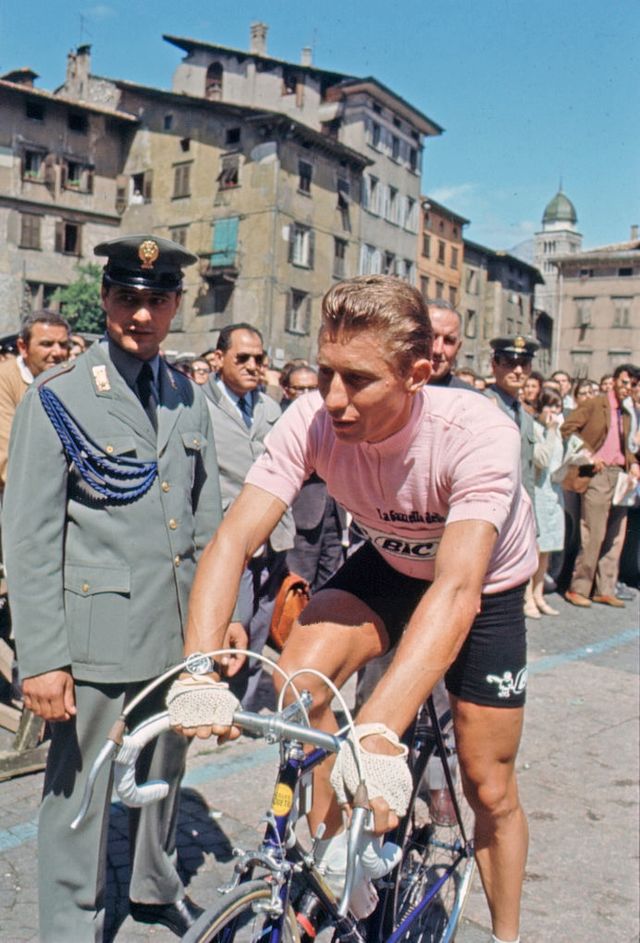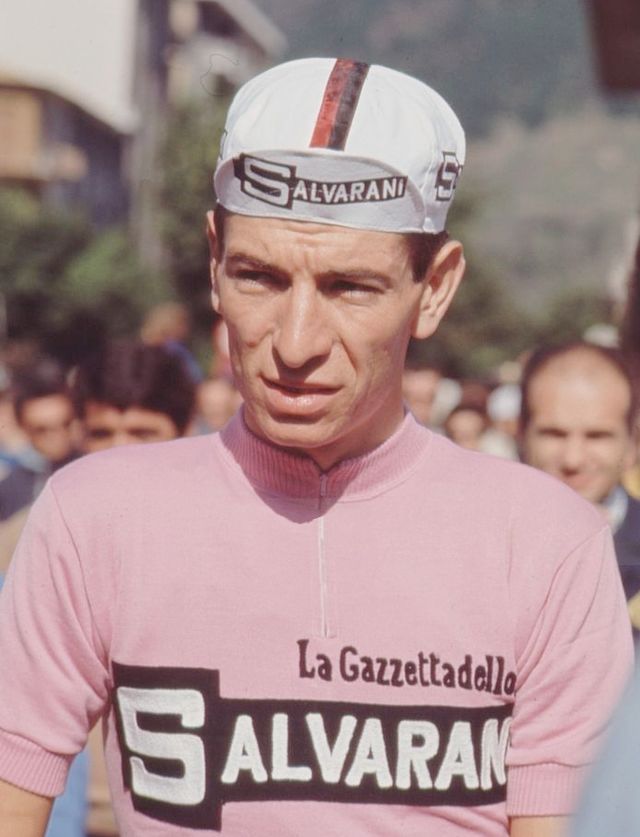Top Qs
Timeline
Chat
Perspective
1967 Giro d'Italia
Cycling race From Wikipedia, the free encyclopedia
Remove ads
The 1967 Giro d'Italia was the 50th running of the Giro d'Italia, one of cycling's Grand Tour races. The Giro started in Treviglio, on 20 May, with a 135 km (83.9 mi) stage and concluded in Milan, on 11 June, with a 68 km (42.3 mi) split leg. A total of 130 riders from 13 teams entered the 22-stage race, which was won by Italian Felice Gimondi of the Salvarani team. The second and third places were taken by Italian Franco Balmamion and Frenchman Jacques Anquetil, respectively.[1]
Remove ads
Teams
Thirteen teams were invited by the race organizers to participate in the 1967 edition of the Giro d'Italia.[2] Each team sent a squad of ten riders, which meant that the race started with a peloton of 130 cyclists.[2] From the riders that began the race, 70 made it to the finish in Milan.[3]
The teams entering the race were:[2]
Remove ads
Pre-race favorites

The starting peloton did include the 1966 winner, Gianni Motta. l'Unità writer Gino Sala named Felice Gimondi, Jacques Anquetil, Vittorio Adorni, Eddy Merckx, and Motta as the main contenders for the overall crown.[4]
Route and stages
Summarize
Perspective


The race route was revealed to the public on 28 March 1967 by race director Vincenzo Torriani.[5][6] The route visited all Italian regions except for Sardinia.[6][7][8][9] With the route entering Sicily for the fifth time in race history, the race scaled Mount Etna for the first time.[10]
Remove ads
Race overview
The sixth leg saw an overnight ferry transfer from Palermo on mainland Italy to the island of Sicily for the next two stages.[10] Following the sixth stage's conclusion the race took a five–hour train to Catania where the upcoming stage began.[10] With the seventh stage hosting a summit finish to Mount Etna (1,892 m (6,207 ft)) it was hoped to be pivotal in the general classification race. However, due to the long transfers forced on the riders by organizer Torriani, the riders rode at a slow pace until the race's final three kilometers.[10]
On the penultimate stage, Frenchman Anquetil was attacked several times. Felice Gimondi finally made the decisive attack, escaping alone and winning by four minutes. Jacques Anquetil considered himself robbed, claiming that Felice Gimondi had escaped by being taken away by the assistant race director's car. He finished third in the Giro, behind Felice Gimondi and Franco Balmamion. Jacques Anquetil's words were corroborated on his deathbed in 2012 by Giovanni Michelotti, the race director at the time.[12]
Remove ads
Classification leadership
Summarize
Perspective
Two jerseys were worn during the 1967 Giro d'Italia. The leader of the general classification – calculated by adding the stage finish times of each rider – wore a pink jersey. This classification is the most important of the race, and its winner is considered as the winner of the Giro.[13]
For the points classification, which awarded a red jersey to its leader, cyclists were given points for finishing a stage in the top 15.[14] The mountains classification leader. The climbs were ranked in first and second categories. In this ranking, points were won by reaching the summit of a climb ahead of other cyclists.[13] Although no jersey was awarded, there was also one classification for the teams, in which the riders were awarded points for their performance on the stage and the team with the greatest total points is the leader.
Remove ads
Final standings
General classification

Mountains classification
Points classification
Team classification
Remove ads
References
Wikiwand - on
Seamless Wikipedia browsing. On steroids.
Remove ads